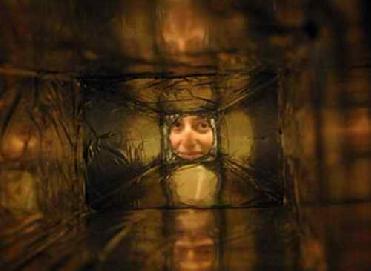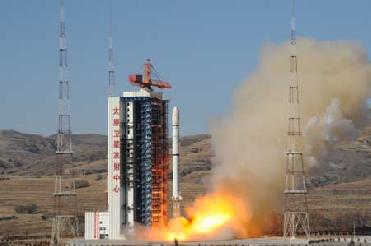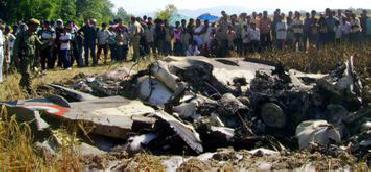
An inside view of a neutron detector in development at MIT's Laboratory for Nuclear Science. Pappalardo Fellow Jocelyn Monroe is seen through the detector. Photo Credit: Massachusetts Institute of Technology
NEW YORK (BNS): Physicist Jocelyn Monroe of Massachusetts Institute of Technology (MIT) has developed a new calibration tool which will help identify all ordinary neutrons that come along, leaving anything else that the other detector picks up as a strong candidate for the elusive dark matter.
The new detector, built by Monroe and her students, underwent its initial testing at Los Alamos National Laboratory last week.
The detector was exposed to a neutron source so that its sensitivity could be precisely calibrated. Once the analysis of that test is completed, the device will be sent to an underground laboratory, most likely at the planned Deep Underground Science and Engineering Laboratory. This facility, though not funded yet, would be set up in the Homestake Mine, a very deep old gold mining complex in South Dakota, and one of its multidisciplinary goals is to provide the world's deepest location for the detection of cosmic dark matter, according to an MIT news release.
Speaking about the new device, Monroe said detecting dark matter experiments is very hard. "Scientists are looking for a tiny signal, from a phenomenon that happens very rarely, namely the collision of a dark-matter particle with one of ordinary matter, producing a tiny, brief flash of light. Such flashes can be detected by putting a tank of liquid deep underground to shield it from most stray particles, then lining the tank with photomultiplier tubes that can pick up even the faintest bursts of light," Monroe said.
The MIT physicist said the problem is, even buried a mile underground, calculations show such detectors will pick up far more collisions from particles of ordinary matter than from those made of the still-unknown particles of dark matter. To be precise, the ordinary collisions should happen about 10 billion times (19 orders of magnitude) more often than the dark-matter collisions. So learning how to rule out those ordinary collisions is the key to finding the unknown matter, she said.
Monroe explains that they were trying to characterise the background. "We're making a precise measurement of the energy spectrum of the neutron background," she said. By understanding the nature and intensity of this background, it will be possible to design more effective shielding material to keep them away from the detectors.
The physicist said by running the two detectors at the same time, anytime a signal is seen in the neutron detector, any signal seen simultaneously in the dark-matter detector can be safely ignored. "Only when the dark matter detector sees something and the neutron detector doesn't will there be a chance that one of the elusive dark-matter particles has been found."
Scientists at MIT said nobody knows what the dark matter is made of, but astronomers are sure it's there because of the way its gravitational attraction pulls on other, visible matter in space. That allows them to determine just how much of the mystery matter is out there -- more than five times as much as the amount of ordinary matter -- but not what it's made of.
Theorists have come up with a variety of candidates, but the leading contenders are a class of subatomic particles known as WIMPS (weakly-interacting massive particles). These are the types of particles, including one called the neutralino, which should be detectable by the deep underground experiments.
Talking about dark-matter particle, Monroe said probably in the next five years, someone will be able to detect it. "Although some experiments have already claimed to see possible evidence of dark matter, so far those claimed results are surprising and unconfirmed," she said, adding that they have not been accepted by most scientists.
Undergraduates Dianna Cowern and Rick Eyers and graduate students Shawn Henderson and Asher Kaboth worked on the new device project with Monroe.
 Previous Article
Previous Article Next Article
Next Article













The Indian Air Force, in its flight trials evaluation report submitted before the Defence Ministry l..
view articleAn insight into the Medium Multi-Role Combat Aircraft competition...
view articleSky enthusiasts can now spot the International Space Station (ISS) commanded by Indian-American astr..
view article